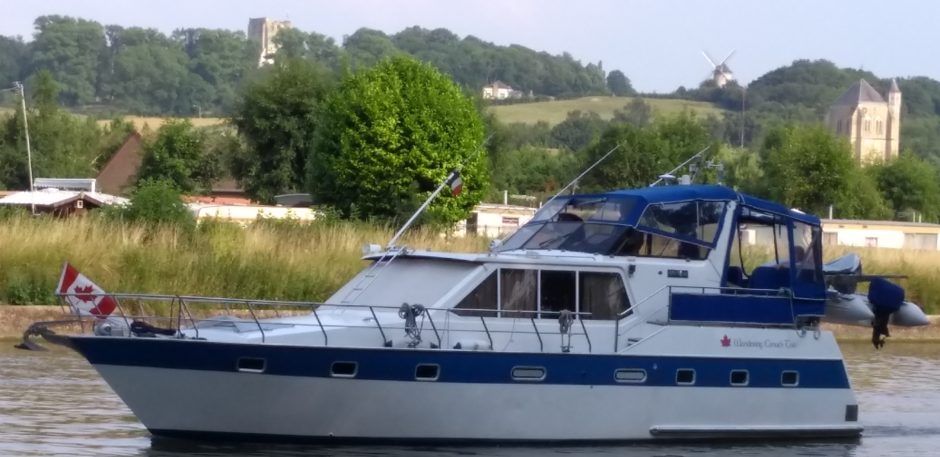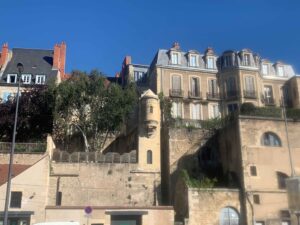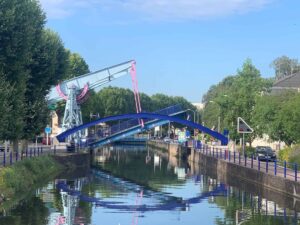
Lift bridge in Montceau les Mines, a former center of mining for iron ore and coal. First lift bridge in a long time!
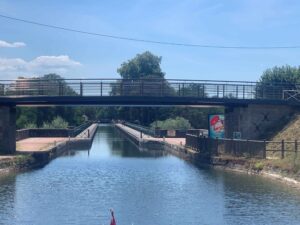
long ‘pont du canal’ or aquaduct, that carries the canal over the Loire river. This reduced the locks, and certainly reduced the issues with flooding and silting, that the former path through the river required
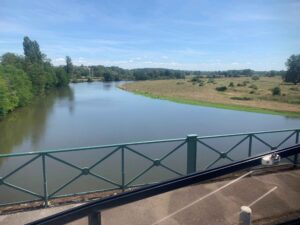
The Loire: wide, shallow (except in flood), the canal parallels the watercourse, but avoids the unpredictability
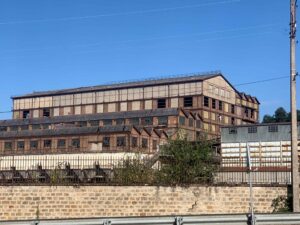
One (of many) ceramic factories along these waterways. Once essential industries, many have closed. Huge buildings (this is not the largest I have seen)
Well, the descent from Montceau les Mines to Digoin was easy, and really nice: followed by major disappointment at Digoin. The depth was very low (so I was dragging), the moorings even more shallow. The good ones were plugged with boats, and the only remaining ones had nasty surprises like sloping stone walls, with a ledge underwater about 15cm down. That makes fendering very difficult (supposedly, tires are illegal as they don’t float, but floating fenders do not work when the obstructions are underwater!). So, a pass on Digoin, but I was 10 minutes late (scoping out the moorings), so had to wait 1h45 to go down the big lock at then end of the aquaduct over the Loire. Even the holding mooring were stone and sloping, which is very hard for me to use without boat damage. So, forget Digoin!
The area is famous for its ceramic industry: everything from utility objects, through figurines and decorative ware. Lots of evidence of huge factories, mostly abandoned., but some still making everything from bricks to decorative wares.
I chose a wild mooring (as I am learning how to do) primarily as these often provide afternoon shade. This is important when the afternoon temperatures are all over 30 degrees! I am self-sufficient for more than a week, requiring water about each week, and electricity can be made via generator.
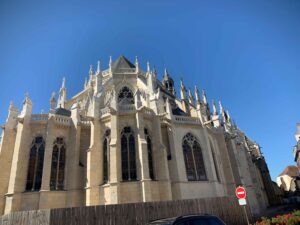
part of the restored facade and buttresses of the cathedral. Superb warm coloured stonework, unmarked by pollution
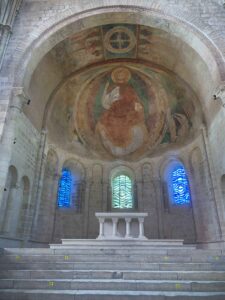
The western end, called the Roman Choir. This is a fresco on the ceiling, which apparently escaped war damage (mostly)
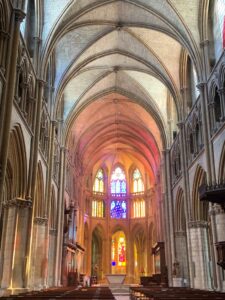
Wonderful colours as the sunlight streams through the modern stained glass: replacements for those destroyed during the war
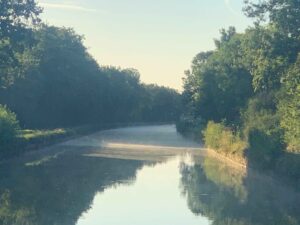
morning mist on the canal. It has been so hot (days above 30 degrees) but delightfully cool at sunrise
I am now outside the city of Nevers. Really quite beautiful, alongside the Loire ( they have a public swimming area on the river, open during the summer). The cathedral, which is exceptionally prominent, was heavily damaged by an air raid in 1944. Apparently the RAF thought they were hitting steel industrial works, but he cathedral and surrounding city center suffered extensive damage. Rebuilt in the 1960’s, and under extensive restoration now, the brilliant cream coloured stonework is certainly an eye-catcher. The interior was alive with ethereal colours as the sunshine shone through the modern stained glass replacements for the medieval windows that were destroyed.
The city is really an interesting juxtaposition between medieval layout (many small lanes and very narrow streets) and open, modern, areas, clearly where the war damage was greatest.
Although it is very hot (drought and heat are major concerns for my progression), I will persevere and move further north as I can. I am almost exactly half-way along this canal, and hope the the next one will still have enough water for me to make the trek!
